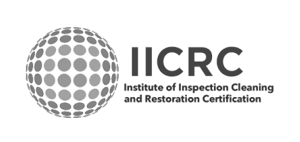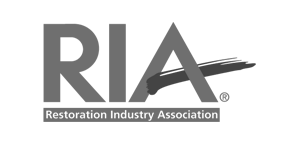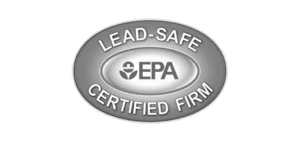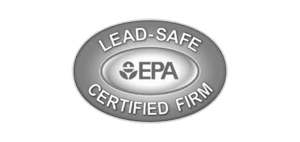Discovering mold in your home can be alarming, especially if you’re unsure about its potential risks. The question “Is it safe to stay in a house with mold?” may be on your mind. It’s essential to understand the health implications and safety concerns associated with mold exposure to make an informed decision.
Mold exposure can have adverse effects on your health, as it can lead to respiratory problems and allergic reactions. Additionally, mold can cause structural damage to your home and impact indoor air quality.
Therefore, it’s crucial to address mold issues promptly to maintain a healthy living environment. In this article, we’ll explore the different types of molds found in homes, signs and symptoms of mold exposure, and common safety concerns associated with staying in a house with mold.
Key Takeaways:
- Mold exposure can lead to respiratory issues and allergic reactions
- Untreated mold can cause structural damage to your home
- It’s important to address mold issues promptly to maintain a safe living environment
- You can identify and prevent mold growth in your home through proper inspection and maintenance
- Professional help is necessary for effective mold remediation
Understanding Mold and Its Impact on Health
If you’ve ever noticed dark spots or a musty smell in your home, you may have a mold problem. Mold is a type of fungus that can grow in damp or humid areas, and it can have serious implications for your health.
Mold exposure can cause a variety of health problems, including respiratory issues, allergic reactions, and even neurological symptoms. Exposure to certain types of mold, such as black mold, can be particularly dangerous.
The impact of mold on health depends on several factors, including the type of mold, the level of exposure, and an individual’s sensitivity. Children, the elderly, and those with weakened immune systems may be more susceptible to mold-related health issues.
It’s important to address mold problems promptly to minimize the potential health risks. Eliminating sources of moisture and improving ventilation can help prevent mold growth in your home. If you suspect that you have a mold problem, consider seeking professional help to assess the situation and develop an effective remediation plan.
| Type of Mold | Appearance | Location | Health Risks |
|---|---|---|---|
| Aspergillus | Green, gray, brown, or white | Air ducts, soil, and food | Asthma, lung infections, allergies |
| Cladosporium | Olive-green or black | Air ducts, fabrics, and wallpaper | Allergic reactions, sinusitis |
| Stachybotrys | Black or dark green | Damp areas, such as basements and bathrooms | Respiratory issues, neurological symptoms |
The table above provides information on some of the most common types of mold found in homes, including their appearance, where they are typically found, and their associated health risks. Keep in mind that not all molds are visible, so it’s important to be aware of potential mold-related symptoms and seek professional help if you suspect a problem.
Common Types of Mold Found in Homes
When it comes to mold found in homes, there are several different types that homeowners should be aware of. Some of the most common types of mold found in homes include:
| Mold Name | Appearance | Typical Areas Found | Potential Health Effects |
|---|---|---|---|
| Aspergillus | (Image below) | Air conditioning units, damp walls, and decaying organic matter | Respiratory infections, allergic reactions, and lung inflammation |
| Cladosporium | (Image below) | Damp areas such as bathrooms, kitchens and basements | Respiratory problems including asthma and hay fever |
| Stachybotrys | (Image below) | Water-damaged areas, including drywall, wallpaper, and carpeting | Respiratory problems, flu-like symptoms, fatigue, and dizziness |
In addition to the types listed above, other common mold found in homes include Alternaria, Penicillium, and Fusarium, among others. It’s important to note that regardless of the type of mold present in a home, all mold has the potential to cause negative health effects in individuals who are exposed to it.
Signs and Symptoms of Mold Exposure
Mold exposure can have serious health consequences. It is important to identify and address it right away. Here are some common signs and symptoms of mold exposure:
- Physical symptoms: headache, fatigue, weakness, muscle pain, and joint ache.
- Respiratory symptoms: nasal congestion, sinusitis, coughing, wheezing, and difficulty breathing.
These symptoms may vary depending on the level of exposure and individual sensitivity. They may also be similar to other health conditions. If you suspect you have mold exposure, it is important to consult with your healthcare professional.
Mold symptoms can be particularly severe for vulnerable individuals, including children and elderly people, individuals with respiratory conditions, allergies, or weakened immune systems. It is critical to address any mold exposure immediately to prevent further health issues.
Health Risks Associated with Mold Exposure
If left untreated, mold in your home can pose serious health risks to you and your family. Exposure to mold can cause allergic reactions, respiratory issues, and long-term health effects. Allergic reactions can include sneezing, runny nose, and red eyes. Some people may also experience skin irritation or rash. Respiratory issues can include coughing and wheezing, as well as more severe conditions such as bronchitis and asthma.
Long-term exposure to mold can have more serious health implications. Some studies have suggested a link between mold exposure and the development of neurological conditions, such as memory loss and difficulty concentrating. Prolonged exposure to some types of mold has also been linked to cancer. It’s important to take mold exposure seriously and address any issues promptly to protect your health.
Additionally, individuals with weakened immune systems or pre-existing respiratory conditions may be more susceptible to the health risks associated with mold exposure. If you or a family member falls into this category, it’s especially important to address any mold issues in your home quickly and thoroughly.
Safety Concerns of Staying in a House with Mold
Staying in a house with mold can pose several safety concerns, which should not be taken lightly. One of the most pressing concerns is its impact on indoor air quality. Mold can release spores and other irritants into the air, which can cause respiratory issues and allergic reactions. Whether you have a pre-existing condition such as asthma or not, it can still affect your health, especially over extended periods of exposure.
Additionally, mold can also compromise the structural integrity of a building. The fungus can eat away at the materials it grows on, such as wood and drywall, potentially leading to significant damage or even collapse.
Finally, mold growth can create unpleasant living conditions. Its musty smell and unsightly appearance can make your living space uncomfortable and unattractive, affecting your quality of life and property value.
Therefore, if you suspect mold growth in your house, it is essential to address the issue promptly and comprehensively to avoid any health hazards and structural damage. Seek professional help if you need it.
How to Identify and Address Mold Issues in Your Home
If you suspect that your home has mold, it’s crucial to take action immediately to prevent further health risks. Here are some steps you can take to identify and address mold issues in your home:
- Check for visible signs of mold: Begin by visually scanning your home for mold growth. Check areas where moisture tends to accumulate, such as the bathroom, kitchen, and basement. Mold can appear as black, green, or white spots on surfaces such as walls, floors, and ceilings.
- Use an air quality test: Consider purchasing a mold test kit to identify if there is an elevated presence of mold spores in the air. These kits can detect the concentration of mold spores and provide valuable insight into the severity of the issue.
- Hire a professional inspector: Consider hiring a professional mold inspector to conduct a more extensive investigation. They can use specialized equipment to detect not only visible mold but also hidden mold growth that may not be detectable by the naked eye.
Once you have identified mold in your home, it’s time to address the issue through mold remediation. Here are some options:
- DIY Remediation: If the mold growth is not extensive, you can attempt to remove the mold yourself using cleaning agents and proper protective gear. However, this can be a complicated and risky process, as disturbing mold can cause it to spread further.
- Hiring a Mold Remediation Professional: For more extensive mold growth or if you have health issues that may be exacerbated by mold exposure, it’s essential to hire a certified mold remediation professional. They have the expertise, specialized equipment, and protective gear to safely remove the mold and prevent it from returning.
Remember, taking action promptly is essential to addressing mold issues in your home and preventing further health risks. If you suspect mold is present, don’t hesitate to seek professional help to ensure a safe and healthy living environment.
Prevention Tips for Mold Growth
To prevent mold growth in your home, it’s essential to keep your indoor environment dry and well-ventilated. Here are some helpful tips to keep in mind:
- Control Moisture Levels: Mold thrives in damp environments, so it’s important to keep your home dry. Be sure to repair any leaks promptly and dry wet areas immediately.
- Improve Ventilation: Proper ventilation is essential for preventing mold growth. Use exhaust fans in bathrooms and kitchens, and open windows on dry days to improve air circulation.
- Maintain Proper Humidity: Humidity levels should be kept between 30-60% to prevent mold growth. Use a dehumidifier if necessary to maintain proper levels.
- Use Mold-Resistant Products: Consider using mold-resistant building materials such as drywall, paint, and insulation to reduce the likelihood of mold growth.
- Clean and Declutter: Regular cleaning and decluttering can help prevent mold growth. Dust and vacuum frequently, and keep surfaces clean and dry.
By following these mold prevention tips, you can help protect your home and keep your indoor environment safe and healthy for you and your family.
Seeking Professional Help for Mold Remediation
If you suspect that your home has mold, it’s crucial to address the issue promptly to avoid potential health risks and further damage to your property. While some homeowners may attempt to tackle the problem on their own, hiring professional mold removal services can provide significant benefits.
Professional mold remediation companies can provide:
| Benefits | Description |
|---|---|
| Certified experts | Qualified professionals utilize industry-standard practices and equipment to effectively and safely remove mold from your home. |
| Thorough inspection | Experts conduct a comprehensive assessment of your home to identify the source and extent of the mold growth, ensuring all affected areas are addressed. |
| Safe removal | Professionals utilize protective gear and specialized techniques to remove mold safely without risking further contamination or damage to your property. |
| Prevention and future recommendations | Experts can provide recommendations for preventing future mold growth and assist you in identifying potential problem areas in your home. |
It’s important to note that if mold growth is extensive or has caused significant damage, you may need to vacate your home temporarily to allow for safe and thorough mold removal.
Contact a professional mold remediation company for a consultation and expert assistance in creating a safe and healthy living environment.
Call Dry Fast today at 1.205.556.8320 for professional mold remediation services.
Conclusion
As you can see, staying in a house with mold can pose serious health risks and safety concerns. It’s important to understand the impact mold can have on your health and take steps to prevent it from growing in your home. If you suspect you have a mold problem, it’s crucial to address it promptly.
You can identify and address mold issues in your home by inspecting for mold and implementing prevention tips such as controlling moisture levels and improving ventilation. However, if you have a significant mold problem, it’s best to seek professional help for mold remediation. Certified mold removal experts can ensure proper removal and prevent further growth of mold while keeping your home safe and healthy.
Remember, protecting your health and the health of your loved ones should always be a top priority. Don’t hesitate to take action if you suspect mold growth in your home.
FAQ
Is it safe to stay in a house with mold?
Staying in a house with mold can pose health risks. Mold exposure has been linked to respiratory issues, allergic reactions, and potential long-term health effects. It is advisable to address mold issues promptly and seek professional help when necessary to ensure a safe living environment.
What are the health implications of staying in a house with mold?
Staying in a house with mold can have various health implications. Mold exposure can lead to allergic reactions, such as sneezing, coughing, and itchy eyes. It can also cause respiratory issues, such as wheezing and difficulty breathing. Prolonged exposure to mold may result in more severe health effects. It is important to address mold issues to mitigate these risks.
What safety concerns are associated with staying in a house with mold?
Staying in a house with mold can pose several safety concerns. Mold can impact indoor air quality, potentially causing respiratory issues and exacerbating existing health conditions. It can also affect the structural integrity of the building and lead to the deterioration of materials. Additionally, mold can create an unpleasant living environment. It is recommended to address mold issues promptly to ensure safety and well-being.
How can I identify mold issues in my home?
There are several signs that may indicate mold issues in your home. These include a musty odor, visible mold growth, water stains, and discoloration on walls or ceilings. If you suspect mold, it is advisable to conduct a thorough inspection and, if necessary, seek professional help for accurate identification and assessment.
What steps can I take to address mold issues in my home?
To address mold issues in your home, it is recommended to start by identifying the source of moisture and addressing any leaks or water intrusion. You can also improve ventilation and reduce humidity levels. If the mold problem is extensive or if you are unsure about handling it yourself, it is best to hire professionals experienced in mold remediation.
How can I prevent mold growth in my home?
To prevent mold growth in your home, it is important to control moisture levels. Ensure proper ventilation in areas prone to humidity, such as bathrooms and kitchens. Use exhaust fans or open windows when cooking or showering. Regularly clean and dry areas that are prone to dampness. Additionally, consider using mold-resistant materials and regularly inspecting and maintaining your home’s plumbing and gutters.
When should I seek professional help for mold remediation?
It is advisable to seek professional help for mold remediation in the following situations:
– If the mold growth covers a large area (greater than 10 square feet)
– If the mold is caused by contaminated water, such as sewage backups or flooding
– If you have health concerns related to mold exposure
– If you are unsure about the proper remediation methods
Certified mold removal experts have the knowledge, experience, and proper equipment to safely and effectively address mold issues in your home.










